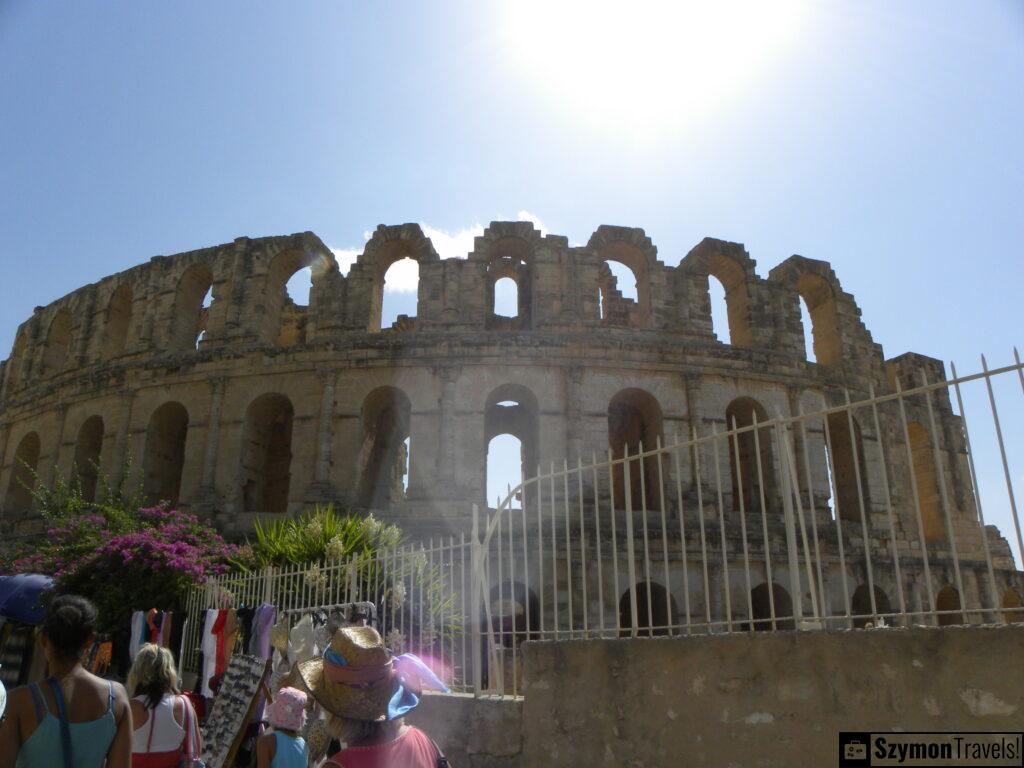A timeless monument to the splendor and magnificence of ancient Rome is located in the charming village of El Jem in the heart of Tunisia. The El Jem Roman Amphitheater is an example of how history and architecture can coexist in one place, commanding the attention of anybody who sees it. Let’s go through time together as we learn El Jem’s fascinating tale.
The Rise of Thysdrus
Thysdrus was formerly a prominent Roman colony in North Africa, emerging in the second century AD. Due to its advantageous location, it flourished as a center of trade and culture, embellished with sumptuous mansions, public baths, and temples to the gods. Thysdrus prospered and rose to prominence as the Roman Empire’s influence grew, standing as a symbol of wealth and sophistication.

El Jem a The Colosseum’s Distant Cousin
The splendid amphitheater was a gift from the Romans to Thysdrus in the third century AD that would later become its crowning achievement. Its enormous presence, rising from the earth, was reminiscent of Rome’s famous Colosseum. Roman architects’ expert hands painstakingly built a beautiful structure that can hold more than 35,000 spectators. The roars of the spectators and the clash of warriors reverberated throughout the amphitheater, which served as a stage for spectacles and gladiatorial contests.

From Ruin to Resurrection
As empires crumbled and centuries passed, the echoes of Thysdrus began to fade. Time took its toll, leaving the amphitheater in ruins. Yet, the enduring spirit, refused to be forgotten. In the 19th century, an era of renewed interest in ancient civilizations, explorers and historians unearthed the buried remains of the amphitheater, a sleeping giant waiting to be awakened.

El Jem, Lights, Camera, Action!

As the soul of the Roman Amphitheater was brought back to life on the silver screen in 2000, the entire globe held its breath. The majestic amphitheater served as the setting for dramatic gladiatorial fights and legendary tales of bravery in the blockbuster movie “Gladiator.” Even though the plot was made up, Roman Amphitheater appearance gave the movie an air of realism and demonstrated the marvel’s enduring attraction.
A Gateway to the Past

Today, tourists from all over the world travel to El Jem in order to experience the magnificence of this architectural wonder for themselves. They are taken back in time to the days of ancient Rome as they pass through the weathered stone archways. Through the hallways, the echoes of heroic gladiators and long-gone emperors resonate, echoing tales of an earlier time.
Preserving a Legacy
The Roman Amphitheater is evidence of the inventiveness and imagination of the human soul. Its preservation serves as a reminder that, however how far away it may seem, our past is an essential component of the present. El Jem continues to enthrall and inspire future generations as a result of continuing conservation work and its listing as a UNESCO World Heritage Site.
The echoes of history fill the air as the sun sets atop, throwing an amber glow on the old stones. History will always be remembered as a remarkable episode in the epic chronicle of human civilization.
El Jem Gallery





